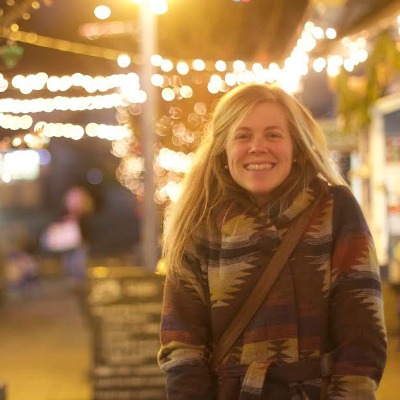Our next Throwback Thursday comes from Jessica Hoekstra (MA in Counseling Psychology, ‘17), an artist and Chicago native who currently works in community mental health in Seattle and as an Assistant Instructor at The Seattle School. Jessica writes about the pain of engaging our own stories as we grow the capacity to work with others, and about how profoundly hopeful that work can be.
I distinctly remember sitting in my apartment on the westside of Chicago, surrounded by the noise and clamor of my neighborhood, when I was notified of my admission to The Seattle School. I had begun to fall in love with the under-resourced neighborhood I had moved into to live in intentional presence with my neighbors, to live out the values I ascribed to through my work and personal convictions. I was hesitant and excited to step into the possibility of graduate school—knowing it would mean major upheaval, loss, and also great possibility.
When I said yes to The Seattle School, the next six weeks felt like an almost paralyzing state of transition, on the threshold of learning what it is to remain in a liminal space. In a strange way, that time of liminality allowed me to resonate with my under-resourced neighbors in a unique way—people who are constantly experiencing displacement, loss, joy, grief, and so admirably holding it all in tandem with a hope like I’ve never known.
That disruptive and exciting feeling of transition did not end when I finally made it to the Emerald City from the Windy City. Even after several months, I still unabashedly described myself as “in transition.” That said, over time, I could feel bits of myself that had been scattered start to settle into place. I learned to developed a new set of rhythms between work, school, and trying to create a sense of place and community here.
I have taken to referring to this time as a wilderness. As a student, I was asked to invite the transformative possibility of engaging, naming, celebrating, and grieving my own story. I would much rather engage, name, celebrate, or grieve the story of those around me, but I learned very quickly that my ability to engage the stories and heartache of those around me required that I first do that work for myself. How dare I imagine otherwise? At the end of first year, my Listening Lab Facilitator applauded me for learning how to show myself the same compassion I extend to others. My capacity for grace and mercy for others was expanding as I learned to engage my story with the same gentleness.
In the midst of this journey, we are encouraged not to rush through to the other side, but rather to dwell in the wilderness. I have come to believe this is a profoundly beautiful and necessary task. Like the nation of Israel in the Old Testament, I believe the pillar of cloud and light goes before me as a figure of hope.
One of the most memorable images from my first term was part of a lecture on our capacity for hope. We looked at a well-known image of modern dancer and choreographer Martha Graham, known for creating a movement language based on the expressive capacity of the human body. Dr. Chelle Stearns referred to this sweeping motion as a “gesture of hope.” Such a gesture is only achieved through intentional practice. Like Martha Graham, we practice ourselves into a hopeful posture. As a result, we must learn to bless what life is in this moment—all that we are holding: possibility, potential, all that is unresolved in our hearts. I have no doubt that Martha Graham endured hours of practice and her fair share of pain to achieve such a gesture. So it is with hope. What a beautiful emblem of the resurrection!
As a part of the Artist’s Way class that spring, I completed a creative project inspired by Martha Graham’s gesture of hope. In an effort to practice my own posture of hopefulness, I created a flip book that traced the movement of the dancer into the full gesture of hope. 35 small drawings of a dancer and her sweeping motion. At the presentation of our creative projects, I shared my piece and how my neck ached and my eyes burned after several late nights drawing and re-drawing only slight variations of the same motion. “Ah, yes. But that is what it is to practice a hopeful gesture,” Dr. Stearns commented. She was right. In the very execution and embodiment of my project, I had tasted hope. It is bittersweet but absolutely worth it.
I hope that in the days to come, my little flip book can serve as a reminder of the beauty we’re working towards. Like that pillar of light in the wilderness, it calls us back to the wilderness at our feet and the promise of a Presence that transcends our circumstance.
In one of the readings I encountered as a student, the author noted a poem by Julia Esquivel. She says we have been “threatened with resurrection” and this is what keeps us up at night. I can’t imagine a better reason for a vigilant night than the profoundly hopeful and startling threat of resurrection.
Join us in this vigil
and you will know what it is to dream!
Then you will know how marvelous it is
to live threatened with Resurrection!
–Julia Esquivel, “They Have Threatened Us with Resurrection”
If Jessica’s story of hope resonates with you, and if you’re wondering if The Seattle School might be part of the next chapter in your own journey, we’d love to chat. It’s not too late to join our 2019 cohort starting this fall, and the next application deadline is June 24. Learn more at theseattleschool.edu/apply.


